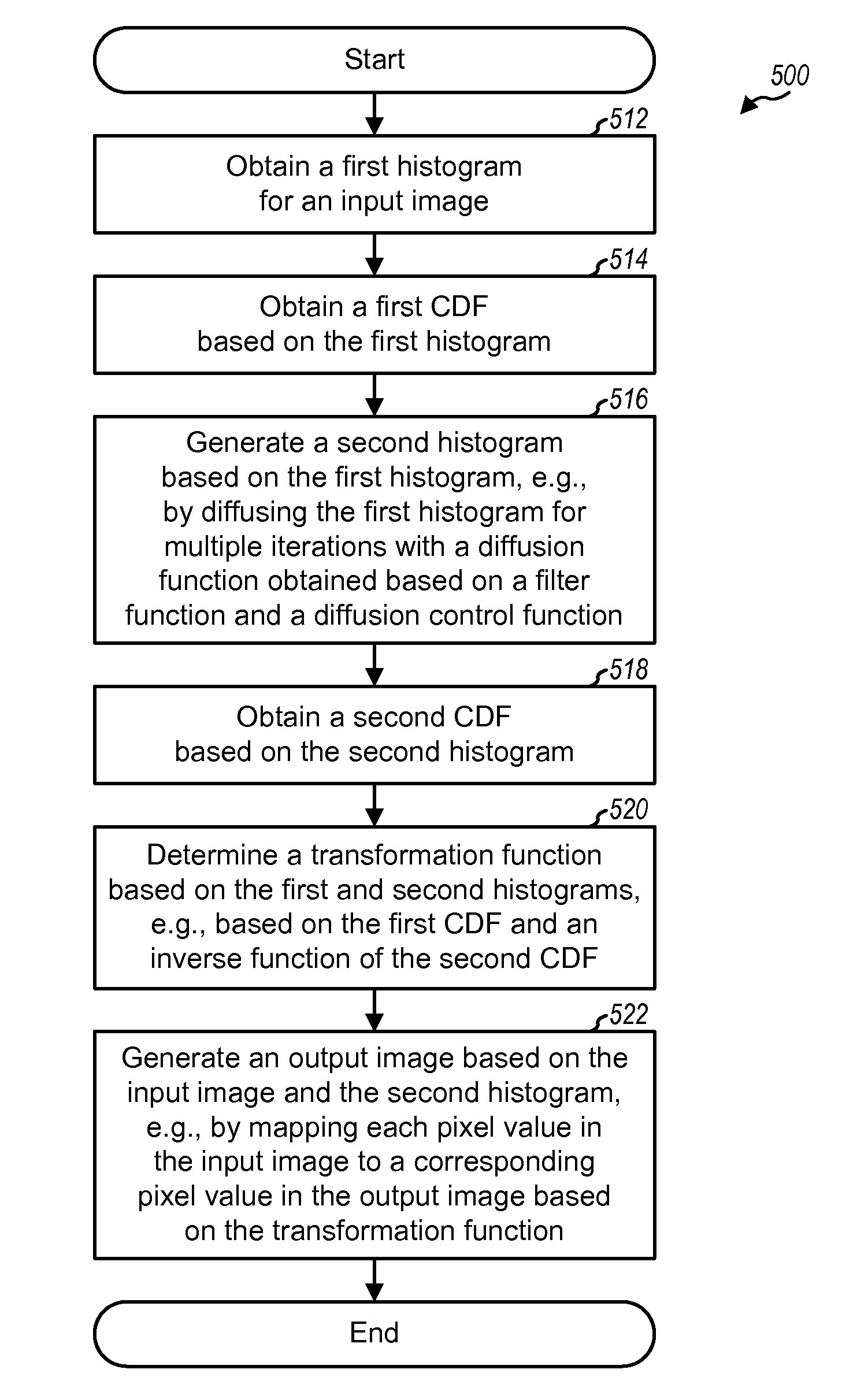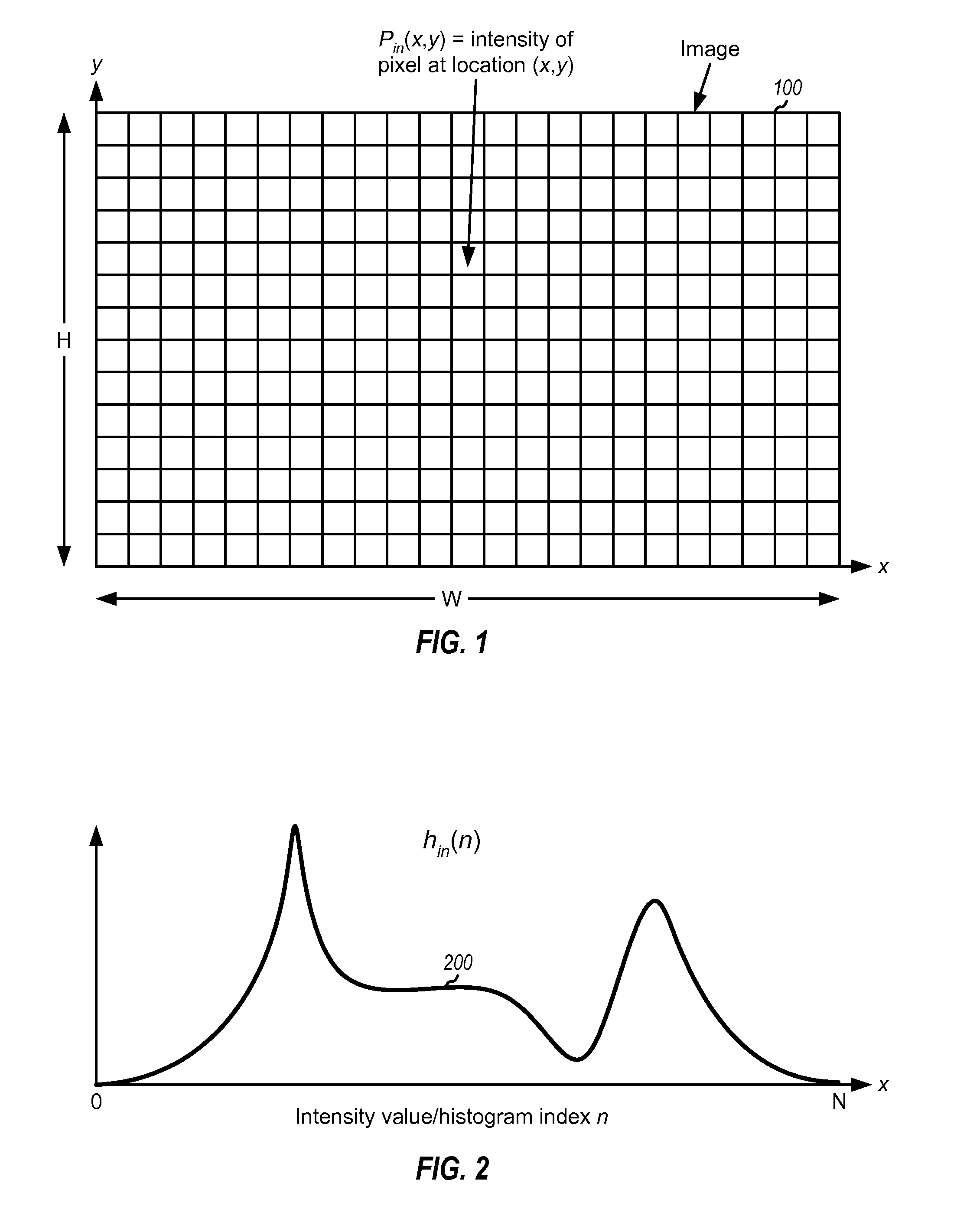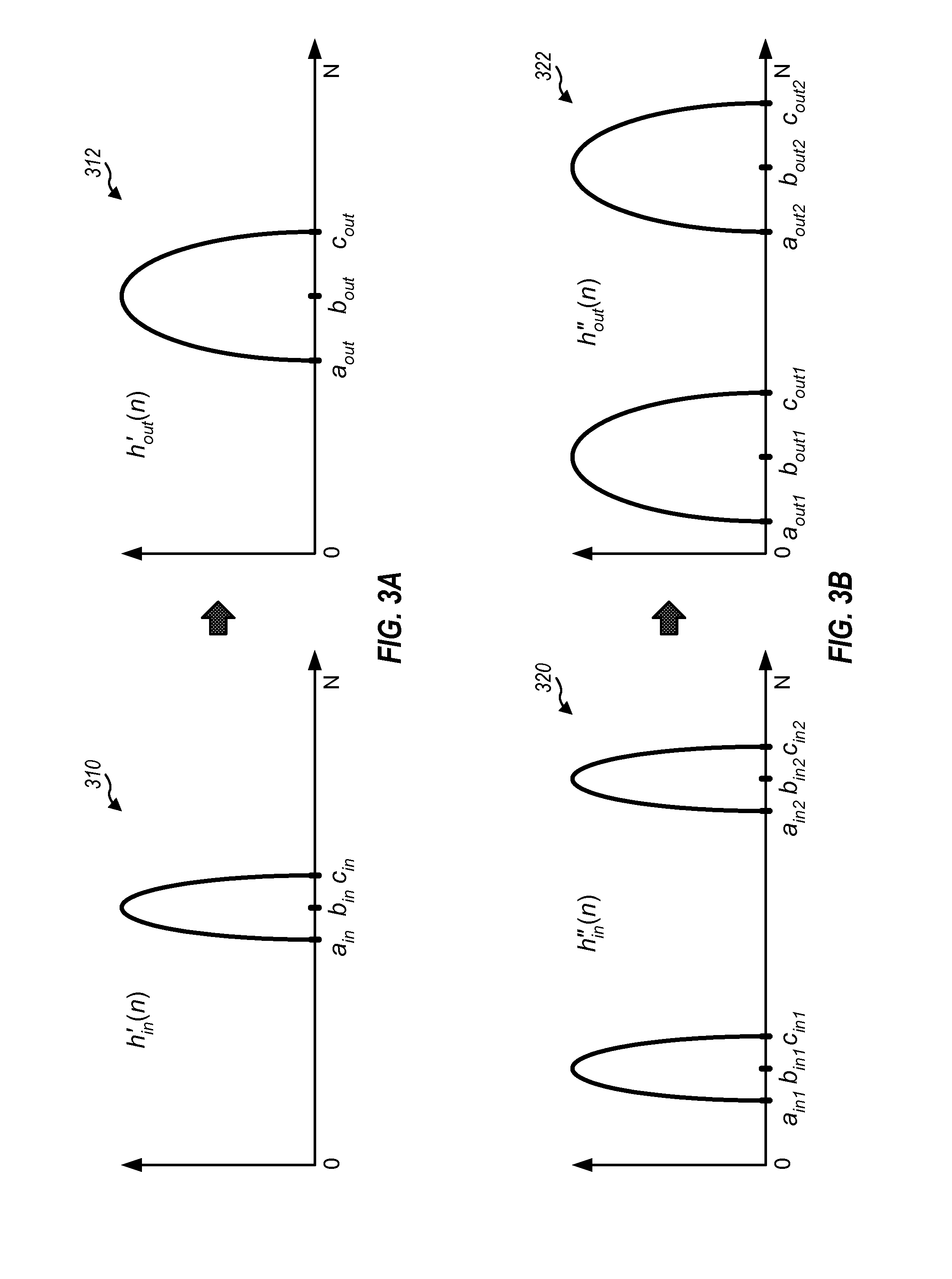Image quality enhancement with histogram diffusion
a technology of image quality and diffusion, applied in the field of data processing, can solve the problems of poor quality of captured images, low intensity coverage, and very dark regions of images, and achieve the effect of improving image quality and improving intensity coverag
- Summary
- Abstract
- Description
- Claims
- Application Information
AI Technical Summary
Benefits of technology
Problems solved by technology
Method used
Image
Examples
Embodiment Construction
[0018]FIG. 1 shows a 2-dimensional image 100, which may be captured using various means such as a regular camera, a digital camera, a video camera, etc. Image 100 includes W picture elements (pixels) in the horizontal (x) direction and H pixels in the vertical (y) direction, where W and H may each be any integer value. For example, the W×H dimension of image 100 may be 640×480 for VGA, 800×600 for SVGA, 1024×768 for XGA, etc.
[0019]Each pixel may be associated with luminance and chrominance information or color information. The luminance information conveys the intensity or grey scale of the pixel and is denoted as Y for luminance component. The chrominance information conveys color information and may be provided as Cr for red chrominance component and Cb for blue chrominance component. The color information may be provided by red (R), green (G), and blue (B) components. Y. Cr and Cb may be converted to R, G and B, and vice versa, via known matrix transformations.
[0020]The image qua...
PUM
 Login to View More
Login to View More Abstract
Description
Claims
Application Information
 Login to View More
Login to View More - R&D
- Intellectual Property
- Life Sciences
- Materials
- Tech Scout
- Unparalleled Data Quality
- Higher Quality Content
- 60% Fewer Hallucinations
Browse by: Latest US Patents, China's latest patents, Technical Efficacy Thesaurus, Application Domain, Technology Topic, Popular Technical Reports.
© 2025 PatSnap. All rights reserved.Legal|Privacy policy|Modern Slavery Act Transparency Statement|Sitemap|About US| Contact US: help@patsnap.com



